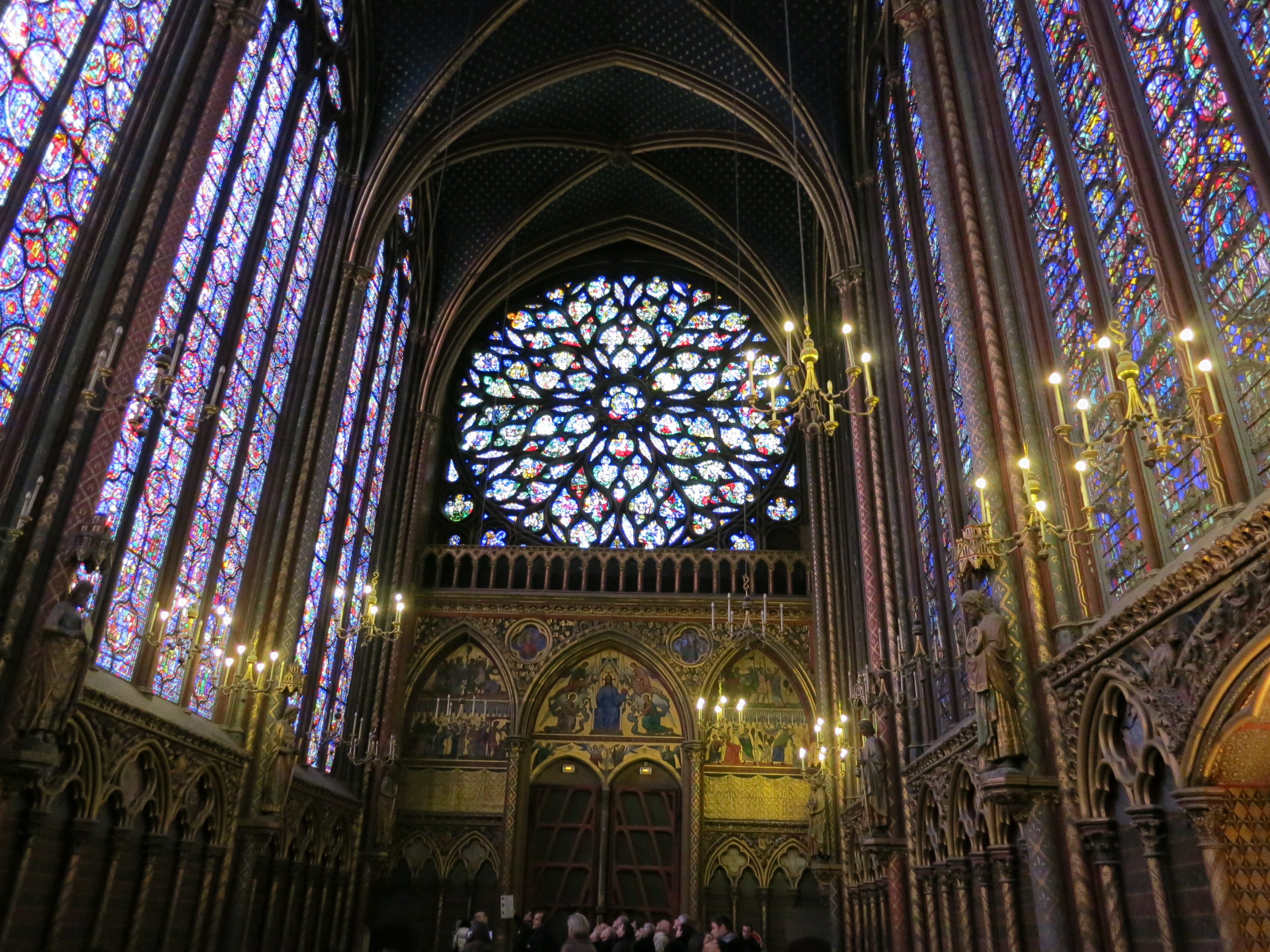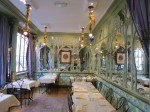
10 Jan TIO IN PARIS: VIEWS OF HEAVEN & HELL
 Talk about window treatment. The boys from the 13th century really got it down. The most famous feature of the 13th-century royal chapel known as Sainte-Chapelle are the stained glass windows: 15 of them fill the nave and apse and a large rose window dominates the west wall.
Talk about window treatment. The boys from the 13th century really got it down. The most famous feature of the 13th-century royal chapel known as Sainte-Chapelle are the stained glass windows: 15 of them fill the nave and apse and a large rose window dominates the west wall.
Sainte-Chapelle or “Holy Chapel,” dominates the courtyard of the royal palace on the Ile de la Cite, now part of the administrative complex known as La Conciergerie, built to house King Louis IX’s collection of relics of Christ. The edifice itself is an example of a phase of Gothic architecture, “Rayonnant,” characterized by a sense of weightless and strong verticality. The dramatic signature windows tell stories from the Bible: The Passion, Book of Genesis, Exodus, Joseph, Numbers/Levitcus, etc. Sainte Chapelle’s windows, silica breadcrumbs leading inexorably to Heaven.
From Sainte Chapelle we walked on to the vision of hell known as the Conciergerie.
The Conciergerie had already developed a pretty bad rap as a prison dating back to the Middle Ages, but the volume got turned way up during the bloodiest phase of the French Revolution, the Reign of Terror. On this particular day, however, the former “antechamber to the guillotine” served as the site of a major art installation.
“Betes Off” (Beasts Off) is a mixed media exhibition of works by over two dozen artists. The show explores one of the key questions Steven Spielberg raises in “War Horse” and other films: man’s relationship to animals. The columns of the Salle des Gens d’Armes (Room of the People of Arms) are morphed into highly stylized, architectural “trees.” Together they create a mystical forest populated by magical fauna.
Later in the afternoon we visited La Pinacotheque for a show of German Expressionism, an early 20th century movement fusing ideas of Die Brucke (The Brucker) and Der Blaue Reiter (Blue Rider).
The founders of Die Brucke , Ernst Ludwig Kirchner, and Karl Schmidt-Rottluff, and later members such as Emil Nolde, Max Pechstein and Otto Mueller, are often compared to the French Fauves. Both movements shared an interest in expressing emotions through high-keyed, non-naturalistic color and primitive forms.
The boys in the Blaue Reiter (artist philosophers such as Vassily Kandinsky and Franz Marc) were after bigger game: spiritual transcendence through their art.
The two movements, parallel chapters in German art history, are represented in the exhibition of over 150 works united under the banner of Expressionism.
Lunch yesterday, a totally memorable steak tartare, was at the stunning Art Nouveau eaterie, Bouillon Racine, 3 Rue Racine, in the 5th arrondissement. Dinner was at La Closerie des Lilas, 171 Boulevard Montparnasse. The cod had about as much personality as a wet tissue, but food is not the main point of the piano bar/restaurant. The place was one of Ernest Hemingway’s main haunts and the atmosphere is laced with testosterone. No big surprise: they did serve a kickass martini.



Sorry, the comment form is closed at this time.